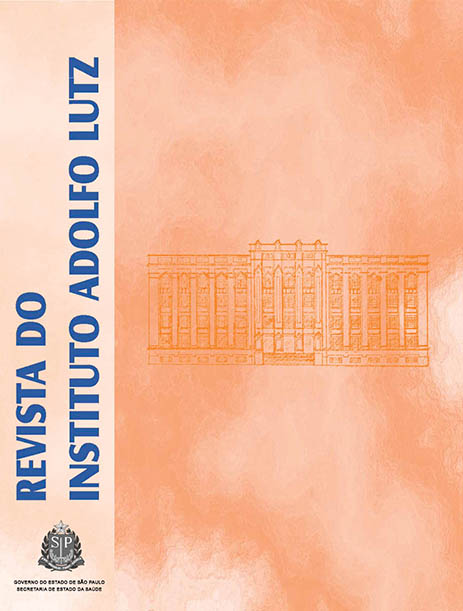Abstract
The consumption of UHT (ultra-high temperature) bovine milk supplemented with essential nutrients is
a practice to reduce the inadequate nutriments intake by population. Vitamin A is one of these nutrients,
whose deficiency is a major reason in causing health problem in the world. The aim of this study was
to verify the compliance of the retinol concentration specified on the label of supplemented UHT milk
package with the amount detected in the product. Three brands of UHT milk marketed in Natal/RN
were analyzed. The retinol concentration was determined by High Performance Liquid Chromatography
(HPLC). One brand of supplemented milk (B) contained the vitamin A concentration in compliance
with that stated on the label. The brands A and C showed the label information inconsistent with the
retinol contents found in the products. The milk A showed a higher average about 61% more vitamin and
the milk C about 30% lower than those quantities informed on the label. A special concern on the milk
enrichment should be taken to ensure the reliable nutritional information stated on the labels, and to
avoid an insufficient vitamin A intake or even a probable toxicity due to excessive nutrient consumption.
References
1. Guzmán EC, de Pablo SV, Yanes CGG, Zacarias IH, Nieto SK. Estudio comparativo de calidad de leche fluyda y en polvo. Rev Chil Pediatr 2003; 74(3): 277-86.
2. Ferreira IM. Quantification of non-protein nitrogen components of infant formulae and follow-up milks: comparison with cows' and human milk. Br J Nut 2003; 90(1): 127-33.
3. Almeida-Muradian LB, Penteado MVC. Vitamina A. In: Penteado MVC Vitaminas: aspectos nutricionais, bioquímicos, clínicos e analíticos. 1ª ed. São Paulo: Ed. Manole; 2003. p.55-72.
4. Saunders C, Ramalho RA, Leal MC. Estado nutricional de vitamina A no grupo materno-infantil. Rev Bras Saúde Materno-Infantil 2001; 1: 21-9.
5. World Health Organization - WHO. The optimal duration of exclusive breastfeeding. Note for the press no. 7. 2001, April 2. [acesso 2004 Jul 05]. Disponível em: [http://www.who.int/inf-pr-2001/en/note2001-7.html].
6. Ribeiro ELA, Ribeiro HJSS. Uso nutricional e terapêutico do leite de cabra. Semin Cienc Agrárias. 2001; 22(2): 229-35.
7. Brasil. Instrução Normativa nº 51, de 18 de set. 2002 do Ministério da Agricultura, Pecuária e Abastecimento. Aprova os Regulamentos Técnicos de Produção, Identidade e Qualidade do Leite tipo A, e o Regulamento Técnico da Coleta do Leite Cru Refrigerado e seu Transporte a Granel. Diário Oficial [da] República Federativa do Brasil, Brasília, DF, 18 set. 2002. Seção 1, p. 13.
8. Brasil. Ministério da Agricultura, Pecuária e Abastecimento. Portaria nº 146, de 07 de mar. 1996. Aprova o Regulamento Técnico de Identidade e Qualidade de Produtos Lácteos. Diário Oficial [da] República Federativa do Brasil, Brasília, DF, 07 mar. 1996. Seção 1, p. 3977.
9. Souza LG, Santos GT, Sakaguti, ES, Damasceno JC, Matsushita M, Horst JA et al. Avaliação da composição do leite UHT proveniente de dois laticínios da Região Norte e Noroeste do Estado do Paraná. Acta Scientiarum 2004; 26(2): 259-64.
10. Associação Brasileira da Indústria de Leite Longa Vida - ABVL: uma trajetória de 15 anos de conquistas. São Paulo; 2009. [acesso 2010 Nov 03]. Disponível em: [http://www.ablv.org.br/Historia.asp].
11. Soares KMP, Góis VA, Aroucha EMM, Veríssimo AMOT, Silva JBA. Hábitos de consumo de leite em três municípios do Estado do Rio Grande do Norte. Rev Verde. 2010; 5(3): 160-4.
12. Soares FB, Sousa JM, Dimenstein R. Avaliação da concentração de retinol em leite UHT (“Ultra High Temperature”) comercializado em Natal. Quim Nova 2008; 31(2): 268-9.
13. Lima JA, Catharino RR, Godoy HT. Ácido fólico em leite e bebida láctea enriquecidos: estudo da vida-de-prateleira. Ciênc Tecnol Aliment 2004; 24(1): 82-7.
14. Paixão JA, Stanford TLM. Vitaminas lipossolúveis em alimentos - uma abordagem analítica. Quim Nova 2004; 27(1): 96-105.
15. Asakura L, Castro TG, Tomita LY. Vitamina A, retinóides e carotenóides. In: Cardoso MA, coordenadora, Vannucchi H, editor. Nutrição e Metabolismo. Rio de Janeiro (RJ): Guanabara Koogan; 2006. p. 81-103.
16. Abranches MV, Della Lucia CM, Sartori MA, Pinheiro-Sant’ana HM. Perdas de vitaminas em leites e produtos lácteos e possíveis medidas de controle. Alim Nutr 2008; 19(2): 207-17.
17. Brasil. Portaria nº 31, de 13 de jan. 1998 da Agência Nacional de Vigilância Sanitária do Ministério da Saúde. Aprova o Regulamento Técnico referente a Alimentos Adicionados de Nutrientes Essenciais. Diário Oficial [da] República Federativa do Brasil, Brasília, DF, 31 jan. 1998. Seção I-E, p. 4.
18. Giuliano AR, Neilson EM, Kelly BE, Canfield LM. Simultaneous quantitation and separation of carotenoids and retinol in human milk by high-performance liquid chromatography. Methods Enzymol 1992; 213: 391-9.
19. Nierenberg DW, Nann SL. A method for determining concentrations of retinol, tocopherol and five carotenoids in human plasma and tissue samples. Am J Clin Nutr 1992; 56: 417-26.
20. Câmara, MCC, Marinho CLC, Guilam MC, Braga AMCB. A produção acadêmica sobre a rotulagem de alimentos no Brasil. Rev Panam Salud Publica 2008; 23(1): 52-8.
21. Fávaro RMD, Garrido NS, Garotti WDO, Yokosawa CE, Ilha MH, Jordão Junior AA et al. Teor de vitamina A em alimentos enriquecidos. Rev Inst Adolfo Lutz 1998; 57(1): 41-8.
22. Núcleo de Estudos e Pesquisas em Alimentação [NEPA]. Tabela Brasileira de Composição de Alimentos [TACO]. Versão II. 2ª ed., Campinas (SP): NEPA-UNICAMP; 2006.
23. Bartholomew BP, Ogden LV. Effect of emulsifiers and fortification methods on light stability of vitamin A in milk. J Dairy Sci 1990; 73(6): 1485-8.

This work is licensed under a Creative Commons Attribution 4.0 International License.
Copyright (c) 2011 Instituto Adolfo Lutz Journal
